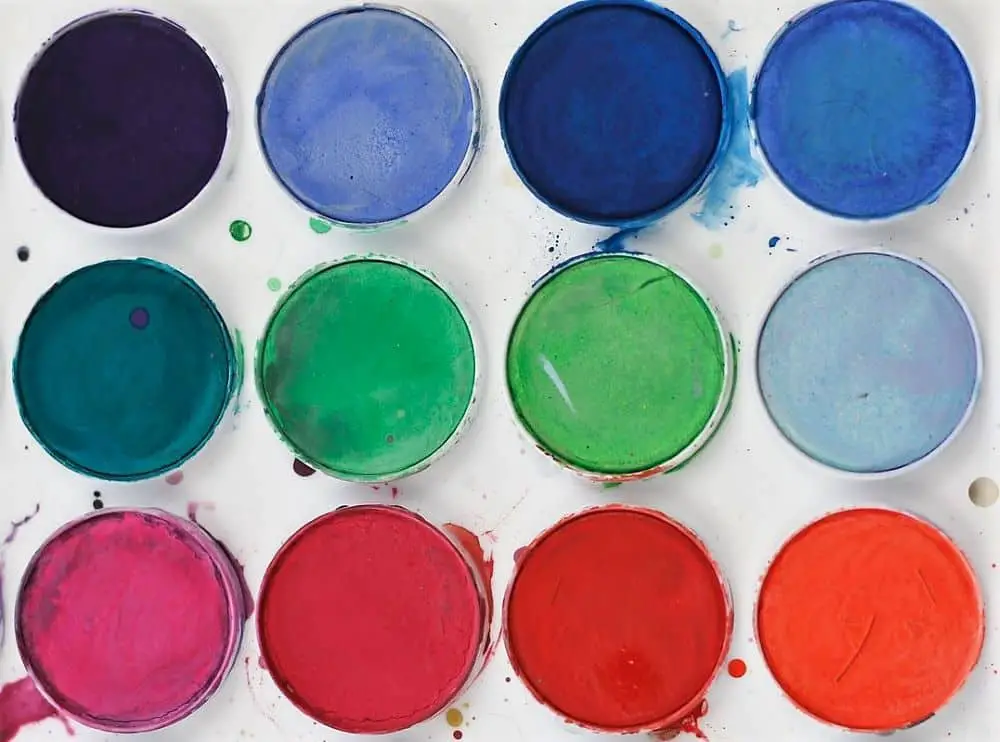Many use enamel paints for its durability, and glossy finish. But this begs the question as to whether or not enamel paint can be used in an airbrush? Enamel paints have been around for many years and the technology has progressed substantially.
However, given the viscosity of the product, and the elements that make up the “Paint”. It’s no wonder this question arises as often as it does.
As you likely already know, paint must be thinned to the right consistency before running it through an airbrush. Otherwise you are likely to end up with clogs, inconsistent spray patterns and so forth….
So, what does this mean?
Simply put, If the enamel paint is thinned to the right consistency, using the right thinners. Enamel paint can be used in an airbrush. However, it is vital you clean the airbrush thoroughly once finished.
Below we will go into further detail as to why it is so important that you clean your airbrush thoroughly after you’ve finished painting. Especially when using enamel paints.
But first, let’s go into detail as to why enamel paints must be thinned to the correct viscosity before use in an airbrush!
Why Enamel Paint Must Be Thinned Before Application
As a refresher, Enamel paint is essentially a term that means: Hard & Glossy finish. Simply put, enamels are designed to achieve a durable, shiny finish once cured. In order to achieve such outcomes. Enamels are produced using specific components / elements. These elements can cause an airbrush troubles if the mixture has not been thinned to the right consistency.
The viscosity of the enamel paint to begin with may vary depending on the manufacturer you
The reason for thinning enamel is so you achieve a smooth and consistent spray of paint on your part. In most cases you want to start by thinning your enamel paint to the consistency of milk.
Thinning to a consistency of milk will provide you with a good starting point. However, you may need to thin the enamel more or less depending on the pattern you’re looking for, and the way your airbrush acts.
It is recommended that you test your enamel paint on a similar spare part before applying it to your final piece.
For further details regarding how to thin enamel paints for use in an airbrush, I suggest you take a look at my 2 latest post regarding the subject.
The first is – How to thin Oil / Solvent Based Enamels For An Airbrush. It is specific to thinning oil based paints (otherwise known as solvent based paints).
The second is – How To Thin Water Based Enamels For An Airbrush. This one is specific to thinning water based paints.
One last quick note: Many people who use a Gravity feed airbrush tend to mix their paint & reducer inside the airbrush by simply dumping a few
Backflushing an airbrush allows the air to circulate through the paint chamber (paint cup) which is believed to be enough to agitate the ingredients to the point of mixing the paint.
However I disagree, as I don’t believe you’ll get a thorough enough mix for good paint flow & delivery.
I recommend you avoid using this method when working with enamels.
Though you likely can getaway using this method when working with water based paints, but Enamels require thorough thinning of the paint, and by simply dumping both your thinner, along with the paint into the airbrush paint cup, and backflushing it. Expecting it to mix well could likely lead to clogging, and inconsistent spray patterns, along with a splotchy look on your
Most recommend you mix your paint using a small cup, or plater. Me
Cleaning Is Vital After Enamels!
Of course you should always clean your airbrush immediately after you have finished your project no matter the paint you are using. But when it
Now, depending on the paints available to be used in an airbrush, some can be more forgiving than others when left to dry in an airbrush. But enamels are not one of those. You see, enamel paints are designed to be durable.
What do you think would be the outcome if a durable (Hard / Tough) paint was left to cure inside your airbrush? Odds are it will be very difficult to remove. Now, of course any paint that has dried inside an airbrush will be difficult to remove (Clean out). But an enamel paint that it’s specifically engineered for durability…
Lets just say, cured enamel inside an airbrush could essentially mean retirement for that airbrush. Obviously this depends on the severity of the situation. But why let it go that far.
Simply make sure you clean your airbrush thoroughly after words, and be sure to use the right products for cleaning.
If you’d like a walk through on the cleaning process, check out either of my 2 latest posts on the topic.
The first is – How to clean an airbrush after oil / solvent based paints. It is specific to oil based / solvent based enamel paints.
The second is – How to clean an airbrush after water based paints. Granted water based enamel paints aren’t as common as oil based (at least at the time of writing). But if you happen to be using water based enamels then be sure to check out this post!
Use The Right Gear When Working With Enamels!
Make sure you have adequate ventilation before you begin to airbrush with enamel. Enamel paints can be toxic, especially the solvent based enamels. It
You don’t want to jeopardize your health by inhaling the fumes given off when using enamel paints, so be sure to take the proper precautions.
Truly, you should wear protective equipment any time your using an airbrush, or spraying paint for that matter. But when using enamels it is
Conclusion
Just a quick recap, Enamel paints can be used in an airbrush. However, proper thinning of the paint is vital for a consistent spray of the paint. To thick and you could end up with clogging, to thin and the paint could run off the part.
When it comes to thinning enamel paints it is important you use the correct paint thinner, and you thin based on the paint manufacturers recommendations.
Anyway, I hope you were able to find some value here! If you have any further questions regarding the airbrush do be sure to take a look around the website. Airbrush Insider is dedicated to helping all in the airbrush community!
This is Colt signing off!
Check Out Some Of My Favorite Airbrush Equipment:

